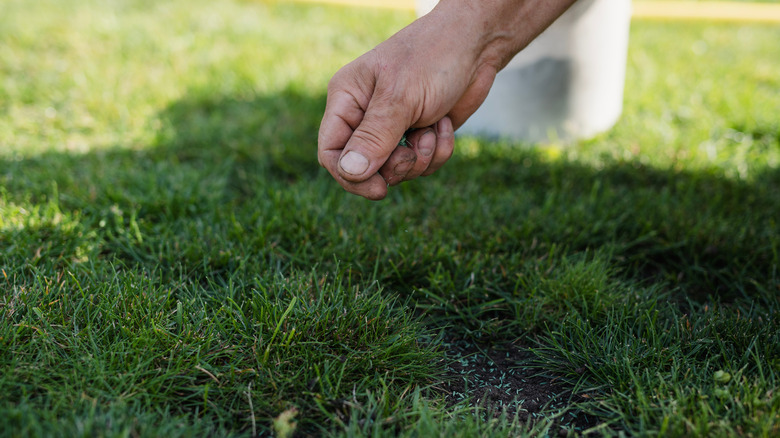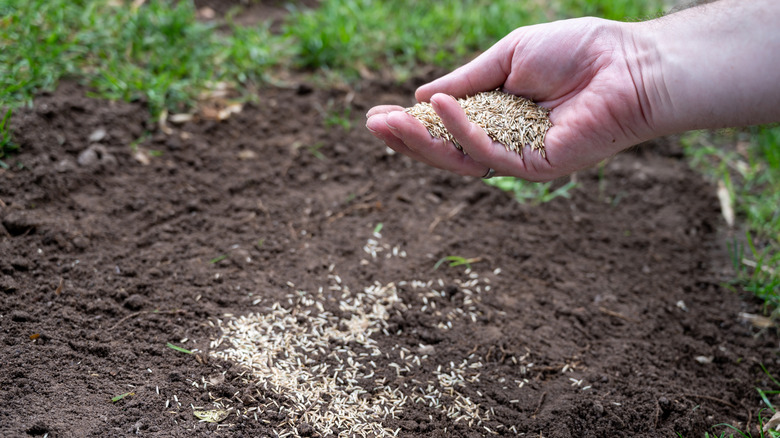Determine The Best Time To Overseed Your Lawn With These Helpful Tips
Managing the health and appearance of your lawn can be a lot of work. Even if you do your best to follow all the most important lawn care rules — like the one-third mowing rule for a luscious grass – your lawn may still struggle. This is often no fault of your own and can be caused by a variety of factors like too much shade, too much sun, disease, lack of water, or even too much water (which is why you should think twice before you water your lawn every day). No matter the cause, one great way to revitalize your lawn is to overseed it. Overseeding a lawn involves adding new seeds on top of the grass you currently have. Doing this after a rough year is often a good idea because it can help improve the health and appearance of your yard. However, when it comes to overseeding, the idea that you should only do so in spring isn't a rule you should follow.
In fact, the best time to overseed your lawn depends on what type of grass you want to grow. One of the lawncare myths you should stop believing is that all grass is the same. In general, grass is divided into two categories: cool-season grass and warm-season grass. Cool-season grass varieties (like Kentucky bluegrass) are grown in northern and central areas of the U.S. and can survive cold winters with snow and frost. Warm-season grasses (like Bermudagrass) are best for the far southern areas of the U.S. and are known for their ability to survive very hot summers. In general, it is best to overseed cool-season grasses in fall, typically between mid-August and mid-September. Warm-season lawns do best when overseeded in late spring or early summer.
Can you overseed your lawn at other times of the year?
Sometimes life gets hectic and it can be easy to miss the best window to overseed your lawn. If this happens, you may be able to reseed your lawn in other seasons; however, you will need to take a few extra precautions to make sure your efforts are successful. For cool-season grass lawns, it is best to overseed in fall but it is also possible in spring. In spring, you will want to make sure that your newly planted grass is well-established before the hot summer heat arrives, so it is best to overseed as early as possible. Also, timing is very important in spring because overseeding right before a heavy rainstorm may cause all your grass seeds to be washed away, meaning that you will have to reseed your entire lawn all over again.
Unfortunately, for warm-season grass, if you miss the early-spring to early-summer window, you may just have to wait until next year. This is because warm-season grasses cannot be overseeded in fall or winter because they need warm weather to germinate and start growing. Overseeding in summer is usually not recommended because it usually won't allow your grass to have enough time to get established before it goes dormant in the fall. As one commenter on The Lawn Forum explained, "I seeded my Yukon [Bermudagrass] last year at the beginning of August. Figured I had all of August and September heat to work with and I did get solid grow in. I thought I did well. Then after winter I realized about 70% of my backyard never woke up. What I thought was dormancy was more winter kill."

